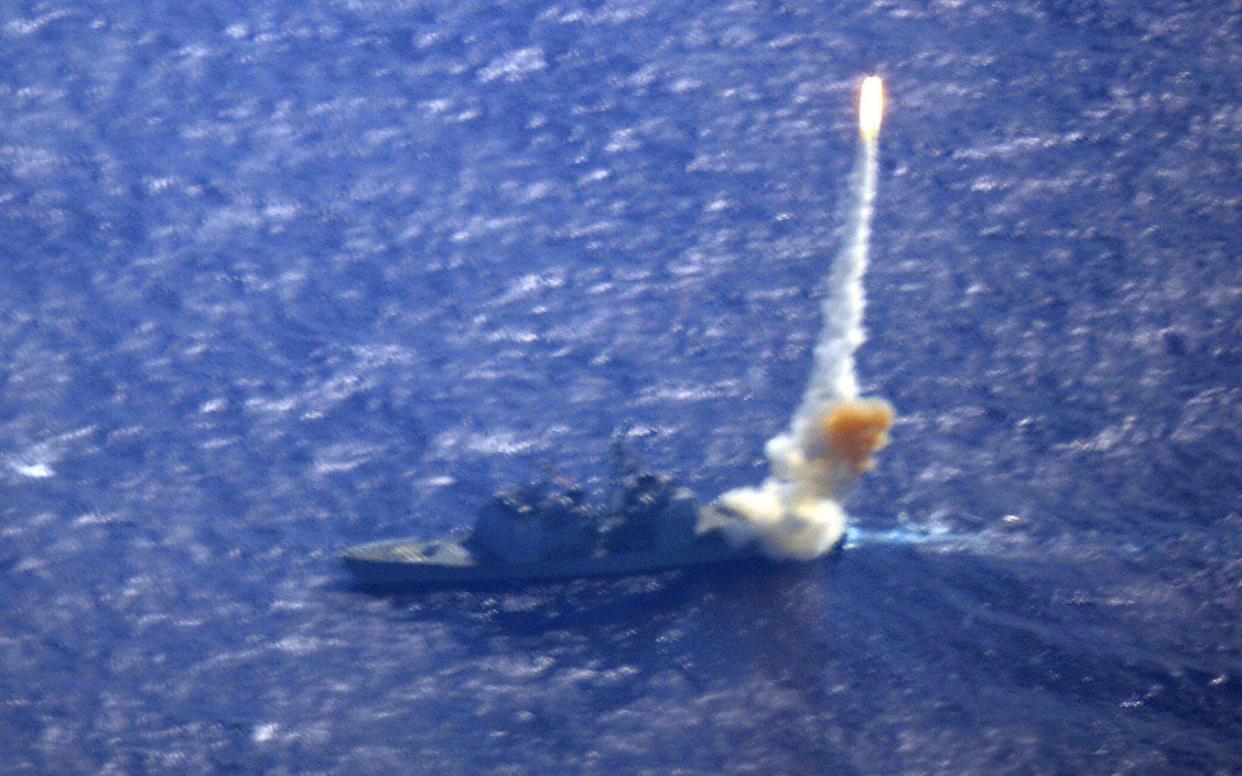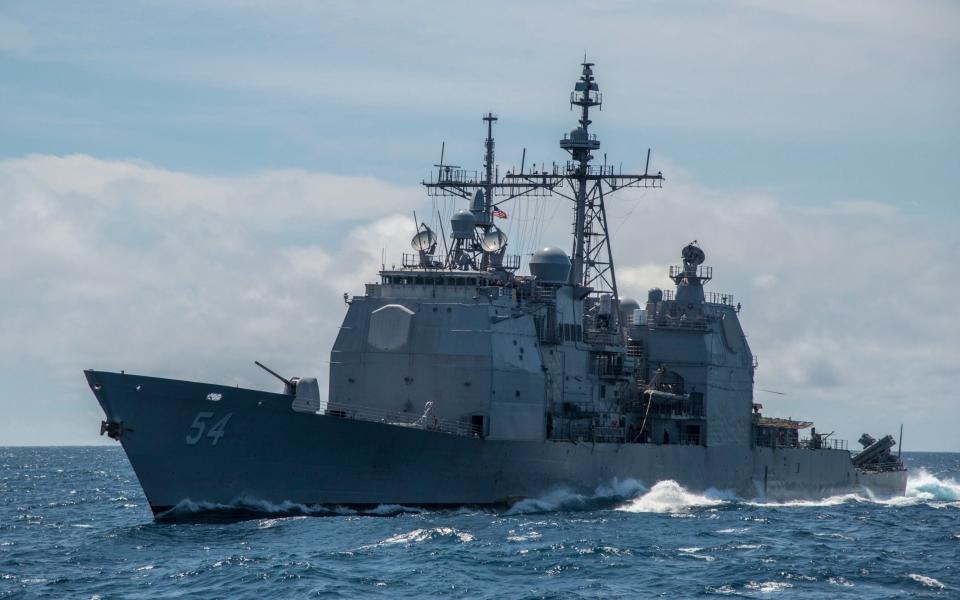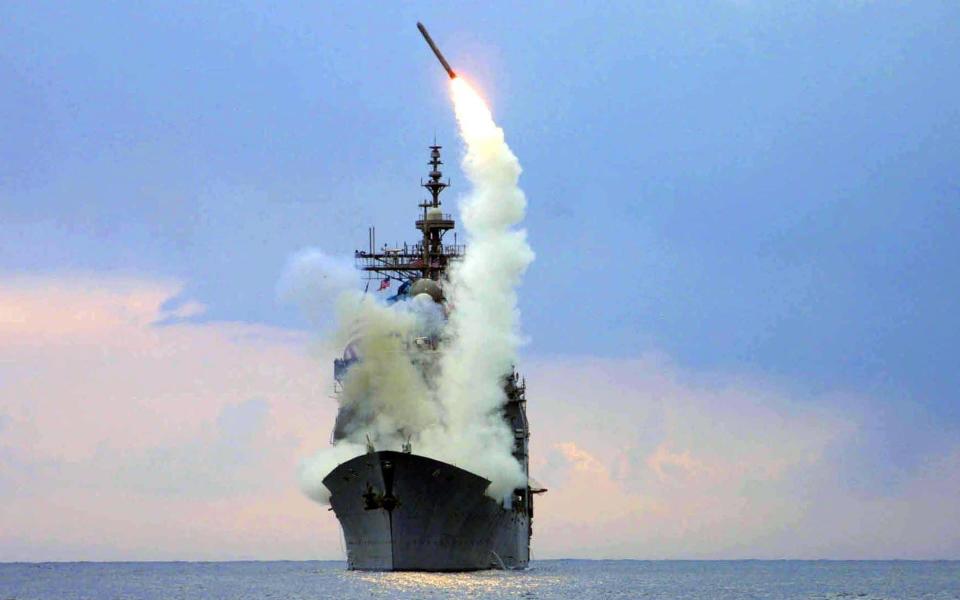Firepower crisis: The US Navy will lose 1500 missile launch tubes in the next few years

The US Navy is already smaller than China’s by count of ships. But that’s not a valid way to measure naval power: it makes more sense to look at missile firepower. Unfortunately that’s not a happy story either.
The end is in sight for the US Navy’s long-serving Ticonderoga-class cruisers, icons of the US fleet since the 1980s. A new plan anticipates that the last of the 12 active cruisers – remaining from 27 built between 1980 and 1994 – will decommission in 2027.
Warships come and go, and the 567-foot Ticonderogas with their distinctive blocky superstructures were never going to last forever. But losing the cruisers is especially painful for the US fleet as it struggles to keep pace with the fast-growing Chinese one.

That’s because the cruisers are the most heavily armed surface combatants in the US Navy. Each packs a whopping 122 vertical launch cells for air-defense, ship-killer and land-attack missiles. The weapons which can be loaded into the Mk 41 vertical cell include the well known Tomahawk, the new Long Range Anti-Ship Missile (LRASM) and the family of Standard Missiles (SMs), with formidable anti-air and anti-missile capabilities. A cruiser packs 26 more cells than the next most heavily armed American warship class, the later versions of the smaller Arleigh Burke-class destroyer.
As the Ticonderogas age out and leave service, they take their missile cells with them – decreasing the overall firepower of what is, for now, the world’s most powerful navy.
Worse for the Americans, the ship class that should replace the Ticonderoga class – a new large destroyer the US Navy calls the DDG-X – has been stuck in developmental and budgetary limbo for decades, and won’t produce an actual working warship until the mid-2030s, at the earliest.
The consequence is a worrying dip in the US fleet’s missile firepower. Today, the US Navy’s 85 destroyers and cruisers and 54 attack and cruise-missile submarines can, in theory, fire nearly 10,000 missiles without reloading. That’s more than twice as many missiles as the Chinese fleet can fire, even though the Chinese fleet has more – but, on average, much smaller – ships.
But that two-to-one firepower advantage is slipping fast. A decline in American submarine numbers, as US shipyards struggle with a serious labor shortage, is one factor. The other factor is the looming end of the Ticonderogas’ active service. And then, we should remember that the US Navy is deployed worldwide: the People’s Liberation Army Navy sticks mostly to the Indo-Pacific.

USS Ticonderoga joined the fleet in 1983. She was the first vessel with the then-new – and still world-class after much upgrading – Aegis combat system, which integrates radars and missiles and allows a ship like a Ticonderoga-class cruiser or Burke-class destroyer to engage targets on the surface, in the air and even at the edge of space.
At its peak in the early 2000s, the Ticonderoga class included 27 vessels. Five decommissioned in the early 2000s after fleet leaders declined to invest in those ships’ modernization. The 22 remaining vessels soldiered on for another decade, lending the US Navy’s its most concentrated firepower. It remains standard practice that a US aircraft carrier deployed on operations is accompanied by a cruiser as well as smaller escorts: that practice looks set to end soon.
But the Ticonderogas sailed long and far and didn’t always get the maintenance they needed during the US Navy’s lean years at the height of the land wars in Afghanistan and Iraq. The cruisers wore out as fast as fleet planners had anticipated – or even faster, in some cases.
Today 12 cruisers are still in commission, officially. But that doesn’t mean they’re all capable of deploying. Metal fatigue and decaying electrical systems have made them unreliable.
The US fleet hung onto the cruisers for too long, making them more expensive to keep in service, while also delaying their replacements for too long.
“The Navy has, by its own efforts, probably put the cruisers in a position where it’s going to be next to impossible to salvage them,” Randy Forbes, a former Republican congressman from Virginia, told USNI News in 2022.
Under current planning, three cruisers will decommission this year, four in 2025, three in 2026 and the last two in 2027. Between them, they have nearly 1,500 missile cells. The US Navy plans to commission 11 new destroyers over the same span of time, but these destroyers will have just 1,000 missile cells between them.
The US fleet will lose 500 missile cells through 2027 just from the surface fleet. Delays in submarine production, combined with the decommissioning of older subs, further weighs on American missile firepower.
The Chinese have no such problem. The Chinese fleet is on track to commission more than a dozen cruisers and destroyers through 2027, adding at least a thousand missile cells at the same time the Americans are losing missile cells.
If everything goes according to plan, and the US fleet commissions new surface ships and submarines on schedule, its missile capacity should begin growing again in the mid-2030s – and could exceed 10,000 around 2040.
But the US Navy is in for a rough decade as its most powerful warships finally decommission without the direct replacements fleet leaders should have planned for a generation ago. When it comes to naval capabilities, it’s important to think long-term. The Ticonderogas are a strong reminder of that truth.

 Yahoo News
Yahoo News 
